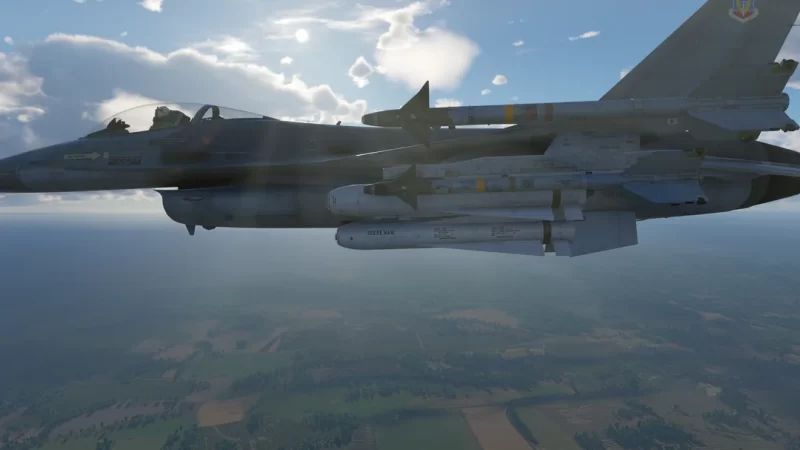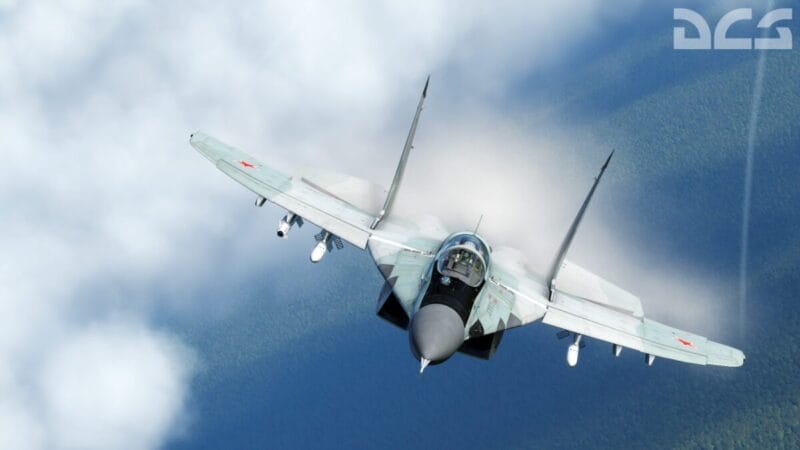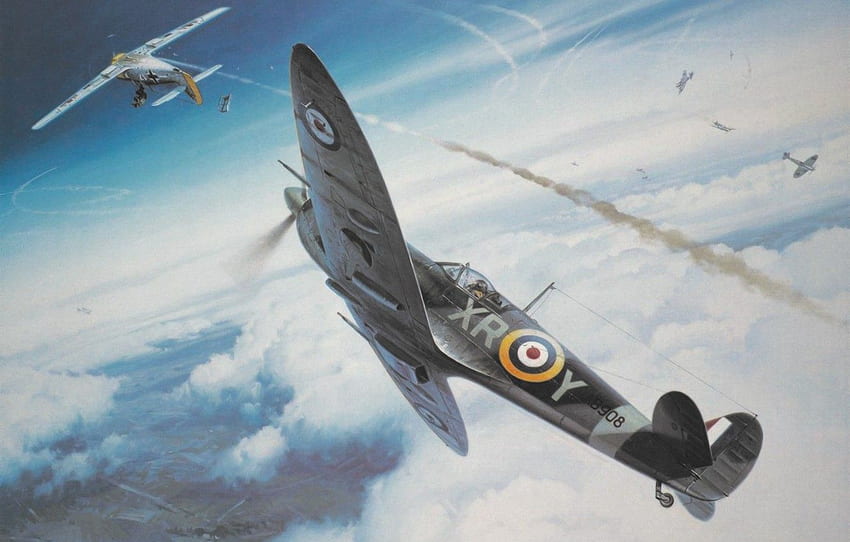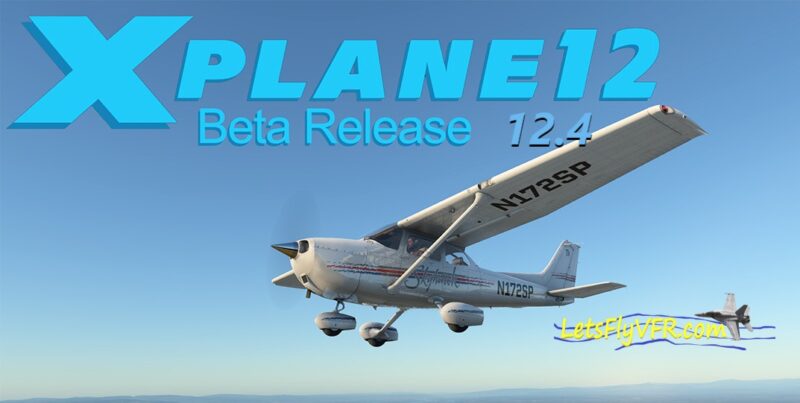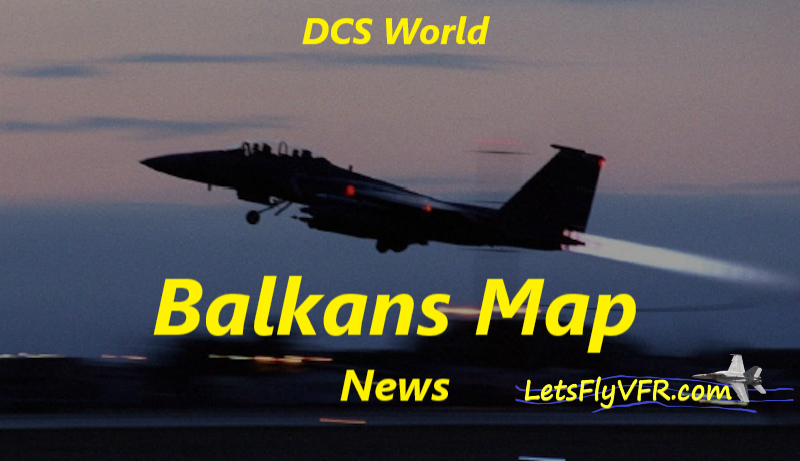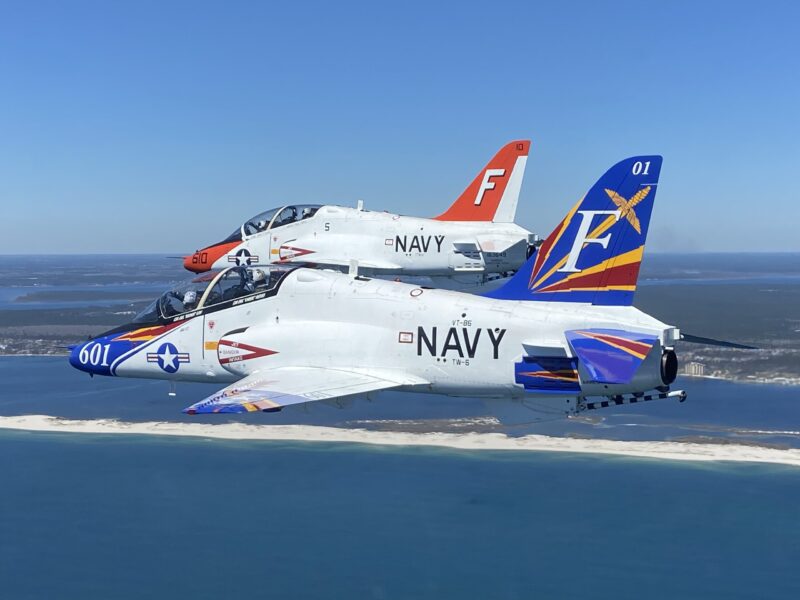TACAN Navigation Made Incredibly Simple for DCS World Combat.
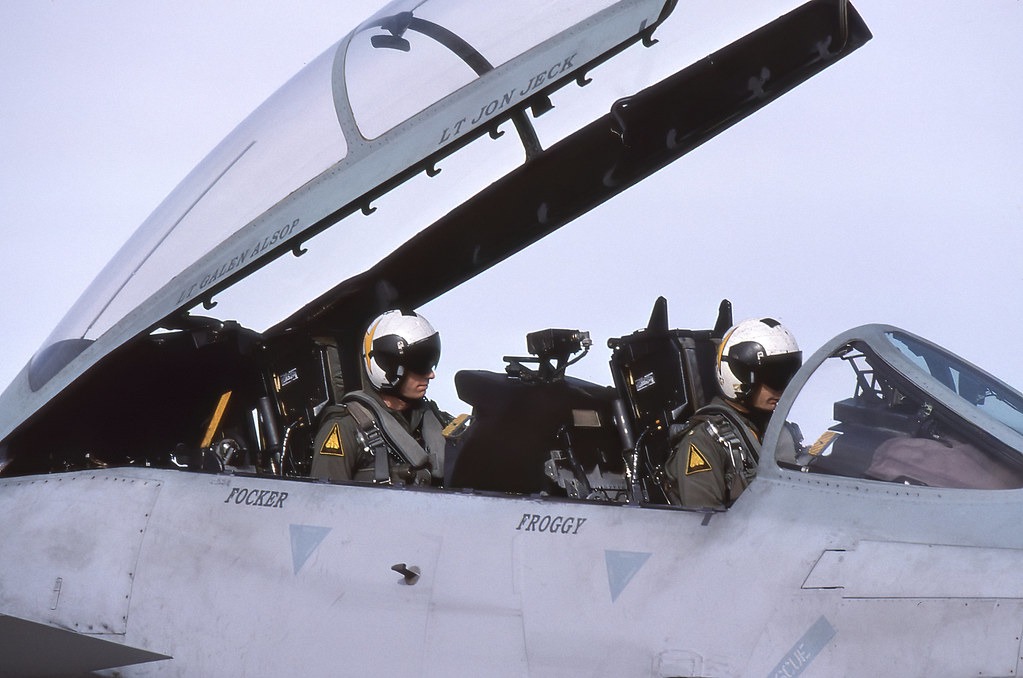
Hey thanks for Clicking on my post! If your here then your ready to learn all about how to use TACAN Navigation and make your DCS world a lot simpler. TACAN navigation has certainly made my experience in DCS multiplayer servers so much better by adding much more situational awareness.
When planning attacks it has made it much much easier by allowing me to know the distance and direction to fly to the home base and target simultaneously.
In recent adventures online in DCS World I have been practicing pop up and toss bomb attacks on airfields as well as other targets with relatively good accuracy. Using this amazingly simple tool.
TACAN navigation has made my mission planning incredibly simple since I discovered how to use it. With a single frequency you can find your home base as well as enemy bases around you. In my recent adventures in online multiplayer missions on Heatblur’s 80’s Cold War Server, (formally ENIGMA 80’s Cold War Server), TACAN has proven amazingly useful to get me to and from my targets efficiently.
Let me guide you how to as well!
What is a VOR vs TACAN – Same but Different!
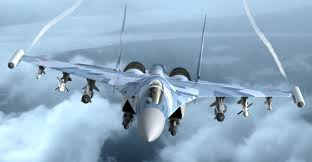
VOR (Very High Frequency Omnidirectional Range Station) is pretty handy tool in your DCS flights as well as other flight simulators. VOR gives you a direction either to or from a specific VOR point. It allows you to select a specific radial which radiates out from the centre of the VOR outwards and fly along a specific radial to get to a location or another beacon. It’s really easy!
TACAN (Tactical Air Navigation System), on the other hand is a different animal as its designed for military use. It is more useful because it offers directional guidance as well as distance from your specific TACAN station. TACAN also can helps you align yourself with a runway to land safely in poor similar to VOR’s but the distance readout can be very helpful to get back in bad weather. With distances you can have some idea of required decent rate and so that could be a life saver.
The Channels are also super easy to select not having lots of numbers to remember. They are simply an X or Y channel with a 2 digit number normally such as X03 or Y32 as examples. We will look at this more soon.
Landing WIth TACAN is Easy!
Simply dial in the heading of the desired runway on the HSI (Horizontal Situational Awareness Gauge) Say 180 and when your lined up the needles will be straight up and down as well as aligned. TACAN It doesn’t give you glideslope like an ILS though so if your in really poor weather you’ll need an ILS preferably although TACAN and an approach procedure can certainly be safe. The decent needs to be a steady 3 degrees which can be calculated:
Altitude = 10,000 Feet
Speed = 200 knots
Runway AMSL = 0 ft AMSL
Distance to runway = 20nm
Decent Rate = Altitude Divided by DIstance = Decent Rate
20NM / 10,000 ft = 500 ft per minute decent rate.
Time to fly the distance is simply 20nm / 200 = 0.1 of an hour – 6 minutes.
- Joystick / HOTAS – AMAZON.com
- Rudder Pedals – AMAZON.com
- Throttle Quadrant – AMAZON.com
- Gaming Chair – AMAZON.com
- VR Headset – AMAZON.com
Directional Guidance.
The TACAN navigation signal radiates out like spokes on a wheel. They cover a full 360 degree arc in individual beams 1 degree apart. If you desire a course of 127 to get from your home base to a target which is 40nm away then as long as the signal is not obstructed by hills etc you can ride the beam home. Just selecting the heading bug and imputing your home base frequency in the TACAN radio panel will guide you safely there. Again these are X or Y channels with a number from 1 to 30 for example. X23 or Y05 could be channels you could input.
Once in the air the units needles will show you if your on course or deviating from it as well as distance from your home base. If you fly a straight line to your target the distance will count for you. You can align the needles with the runway heading allowing you to fly a low visibility approach somewhat safely. No point in killing bad guys or bombing targets finding yourself lost or in bad weather trying to finish the mission safely with a landing. Your crew chief is back there waiting for your return.

Toss Bomb with TACAN Attack.
Let’s say you want to toss bomb from 4 NM from your target. Step one is to take off and fly the course heading accurately. Keep the needles aligned precisely as you make your approach. If your target is 44 nm from your home base, then you will pull up at 40 nm, release your bombs which throws them the required distance towards your target.
To remain safe you then turn hard back in the opposite direction and dive for safety! Its best to run away as fast as possible so as to avoiding those nasty AAA and SAM missile units. Yes, it’s not as accurate as normal dive or low level bombing, but if you can deliver your ordinance safely, hit the target as well as arrive home then it’s a real win!
TACAN also can be used in training and attacks to keep safe separation between aircraft in poor weather as well. Night as well as poor weather can make this feature a life saver with this air to air feature. We will talk about these very soon!
Real World vs DCS World
Its worth noting that enemy bases are not likely to share their TACAN frequencies in a combat zone, that’s true. In the fast moving pace of DCS World multiplayer server campaigns bases are won and lost pretty quickly so maybe in real life they wouldn’t have time to destroy their own TACAN stations?
The TACAN stations are often available as maps change hands between Red and Blue forces during combat operations. This means you can use multiple TACAN channels as you fly a route ensuring your away from pesky SAM and AAA dangers at enemy airbases plus heavily defended cities. This is all done when planning a mission and headings required to avoid dangerous areas.
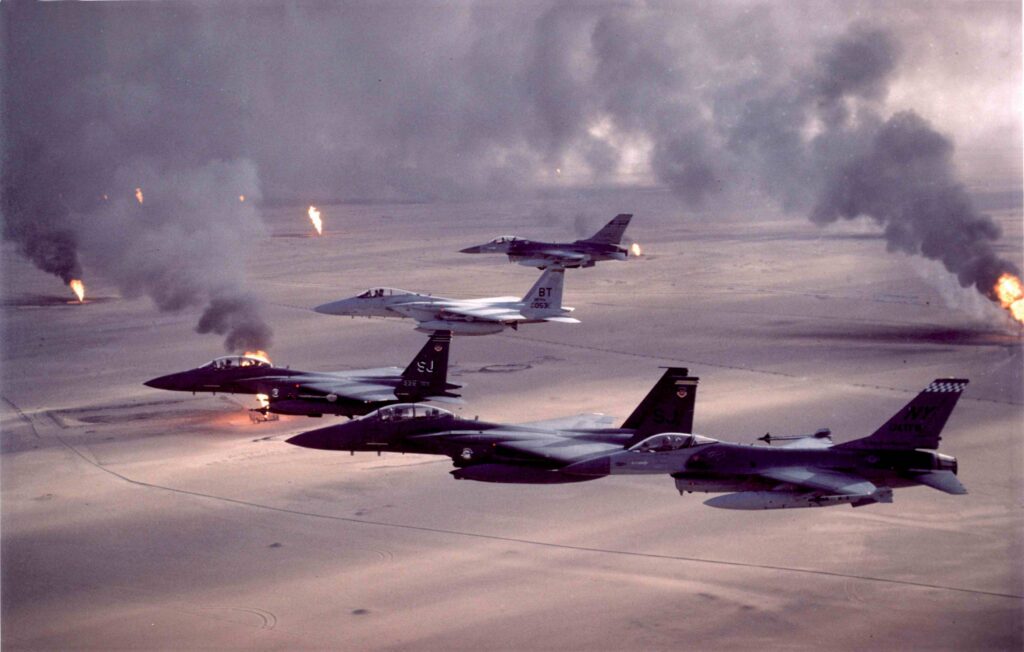
Track Your WIngman with TACAN A/A Modes
TACAN is also a valuable way to track friendly aircraft as well when in formation. This means you can track a friendly aircraft if you both select a specific frequency selected and have briefed what your going to use. It may be that while communicating on SRS or typing you can select frequencies. Its a great to use the Air to Air feature of the TACAN system when in the F-5 Tiger. You can quickly determine your wingman’s distance and direction if you get seperated or have to respawn and rejoin the fight. Each Player can select their own frequency and select Receive just to find a friend or Transmit /Receive to transmit theirs and receive their wingman’s locations.
The HSI Horizontal Situational Awareness Indicator.
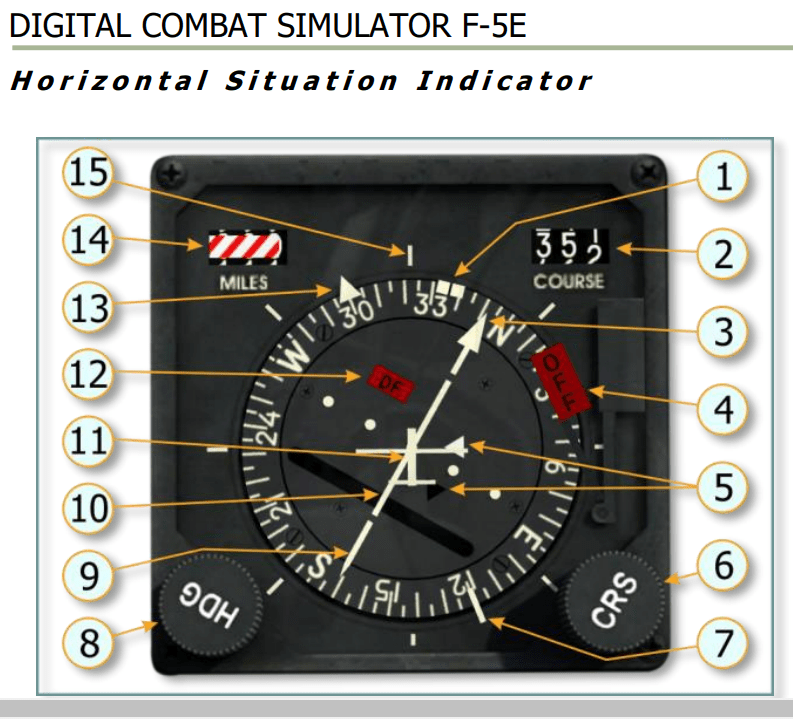
The TACAN consists of the TACAN Radio panel to select frequencies as well as the desired mode of use. The second part of the system is the HSI Indicator allowing you to bring all the available information together in one place.
The Instruments may have a needle that rotates to the desired course direction. This is done with the CRS (Course) knob. Rotating this to the desired heading bill give you your desired track to fly. In this picture the course setting is 352 degrees. The centre needle is aligned showing the aircraft is on course but needs to turn left to bring the ARROW vertical. If the aircraft stays on its current 320 course it will go left of the desired course. Should the aircraft drift off course the line will move in the direction we need to fly to bring us back on course.
There is also a heading indicator which just shows us a desired HDG (heading) we wish to fly or maintain. I personally use it with the AWACS BRA calls to note where the immediate air threat is emanating from. It’s good situational awareness and allows decisions such as to determine if I need to jettison bombs and fight the threat or not.
If your struggling with high winds blowing you off course then you can set this as a guide as to the heading you need to correct for winds to remain on track. As the needles separate you can work in some wind correction to keep on course.
TACAN Radio Controls
The TACAN radio is pretty simple to operate so ill use the F-5 Tigers unit as I’m more familiar with it. There are a range of TACAN frequencies available for your use which are either X or Y channel plus a specific number as previously mentioned.
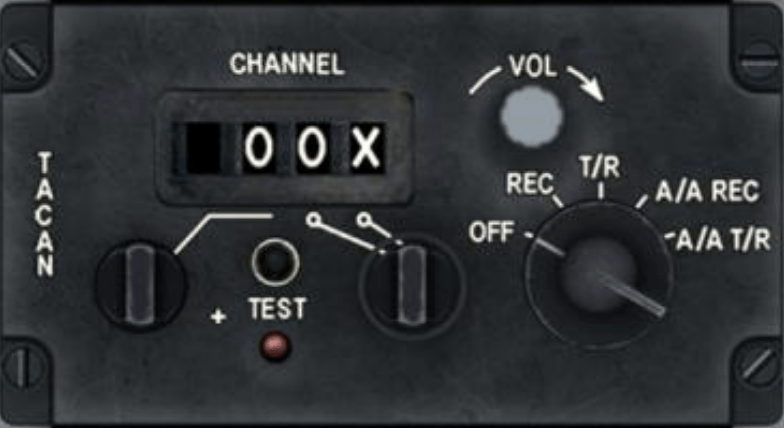

It is as often as simple as X01 or Y07 to select a frequency to use on the panel. Selecting Standby warms the unit up then selecting TR (Transmit/Receive) or just REC which is a passive receiver mode. This may help you not get tracked by transmitting a signal that defenders may detect.
The primary mode control has OFF as well a REC (Receive) modes then it has T/R (Transmit Receive) then two air to air modes you can use with friends when flying together. If you each have a separate frequency and use the transmit receive you can track each other easily.
To track a friend using 12X simply rotate the two selectors that change the numbers and select A/A mode. REC (recieve or T/R (Transmit Receive). On your HSI rotate the CRS nob till the needles align. You will have the direction and course to your friends current relative position from you as well as the distance if your both using transmit receive (T/R) Turn and fly that heading so the needle is pointing vertically and all parts aligned.
Flight Planning.
If your planning a simple bombing mission of an airfield then TACAN navigation will help you get there. For example, you can select an outward leg to your IP (Inbound Point) where you commence your attack. This point may be chosen because it provides cover from SAMS and AAA on your approach. Using hills or other terrain to mask your approach is invaluable.
The Attack!
On take off on your target heading you could select 50 degrees and note its 60 nm to your IP. Take off and fly the needles of your HSI till your near the IP point. Now if you know the TACAN channel of your target base you could select it and then enter an inbound radial you want to do your attack on. It may be you want to come in behind hills or terrain. Dial in the new channel on your TACAN radio channel and on the HSI select your desired attack heading.

In this example you can fly the desired heading to the target and know when to pull up as the TACAN distance will give you range to target. In my case I have been doing Toss Bombing which you can learn about here. At 4 NM you can now pull up to 30 degrees nose high at 500 knots and in 3 seconds manually release the weapons in a ripple. Now roll inverted and pull hard heading back to escape AAA and SAM threats. Maybe you will see the smoke rising from your target as you leave.
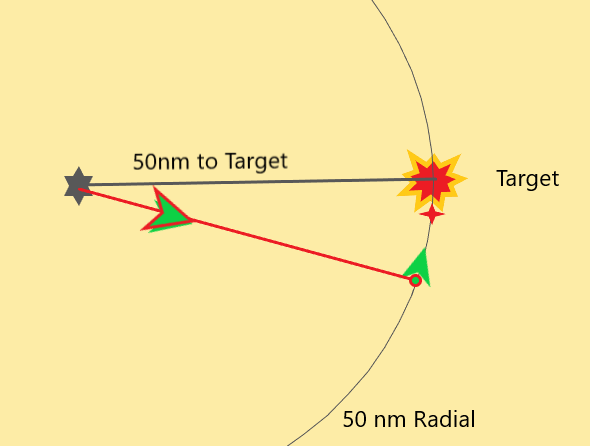
So in this example we have used two different TACANS to attack the target and and returned home victorius. Home TACAN gave is the guidance to our IP then the Enemy VOR to the target with the home TACAN navigation tools giving us guidance home.
RADIAL NAVIGATION
It’s also possible to use RADIAL tracking by simply maintaining the distance from the base TACAN station. You would require to continually make either left or right turns to keep on the radial. If your quite close then it may be more challenging as it will be more sensitive to your corrections but at 10 or more NM it should be easy enough.
Using just the distance from the TACAN station as well of the TACAN to determine a target location with some accuracy with a final visual attack or a LASER designated target. You need to know the distance to the target accurately as well as the heading from your home VOR to the target or calculated release point. Yes, this is getting more difficult, but seems more realistic in that the enemy VOR is probably not known.
What we must do in the planning stage is determine the release point. If your planning a dive or low level high drag bomb attack then the actual runway cross point could be that target designation. This then would be as per the example on the 50 nm radial so you just have to keep turning slightly left to keep exactly 50 nm from your TACAN station. This will keep you on the radial and correct alignment to attack the target.
Next you need to determine the angle from your TACAN station that intercepts with your target point on the runway intersection or your pull up point 4 nm from the target but on the 50nm Radial.
Mission Measuring Tool is the Answer.

Using the Mission Editor or Multiplayer Server map measuring tool to work out the required information is quite easy. The measuring tool will place the beginning point if you right click your mouse on the Home Base VOR. Then drag the line out to meet your target measure the distance and angle. The tool displays both the distance in NM as well as the angle to the point it is over. Right Click again and you will have the information you need to plan your flight or attack as needed.
- Latest CPU’s Available Now – Amazon.com
- Get a NEW GPU Best Performance – AMAZON.com
- Upgrade RAM Here today – AMAZON.com
- Prebuilt PC Options – AMAZON.com
Let’s Plan a quick Direct Attack
In this attack we are flying our F-5 Tiger II to toss bomb an enemy airfield. We are carrying full internal fuel with 5 Mk-82 LD bombs on the multiple ejector rack on the centreline.
- Take off and turn on heading.
- Turn to intercept Attack heading noting the small town and road as PULL UP Point. Parameters: 500 knots, 30 degree climb and release 3 seconds from pull up start. Roll left and dive heading for the lake to escape flares and chaff deployed and as low as possible!
- Inbound track: 29 Nm @ 103 degrees.
- Bomb IP. 4Nm 356 Degrees. This is the attack.
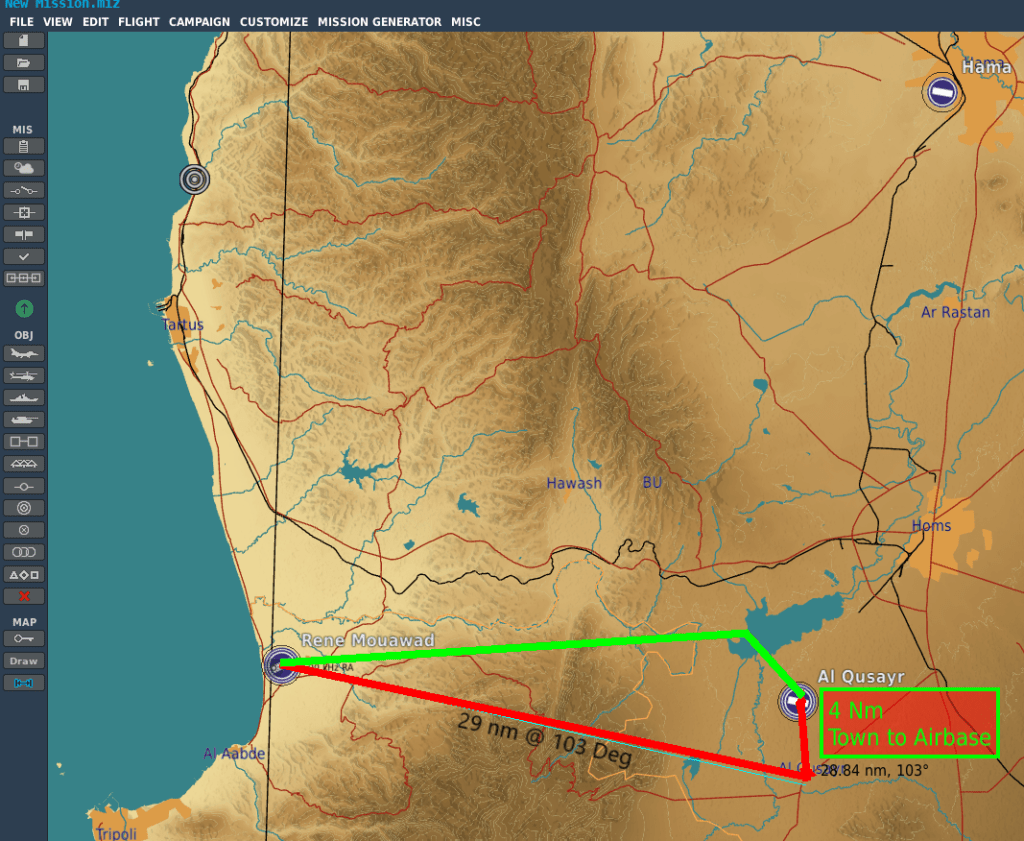
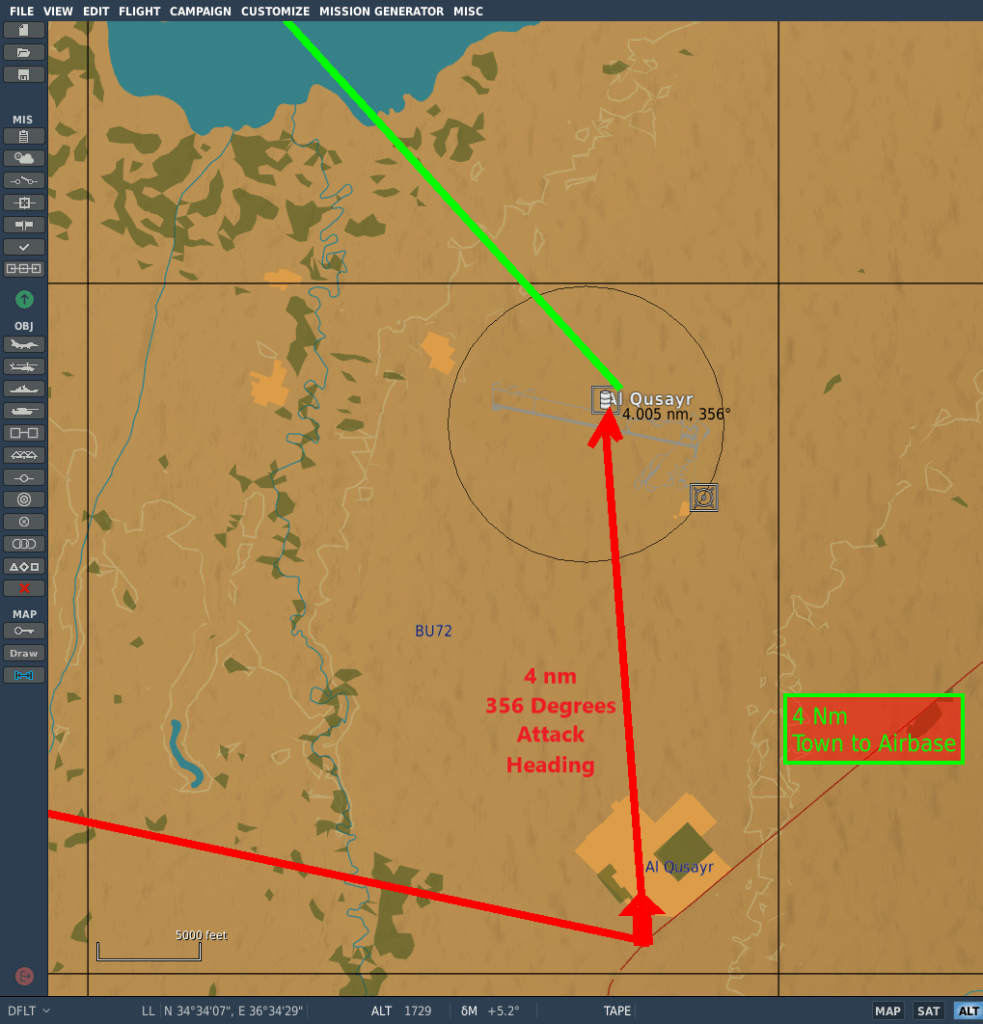
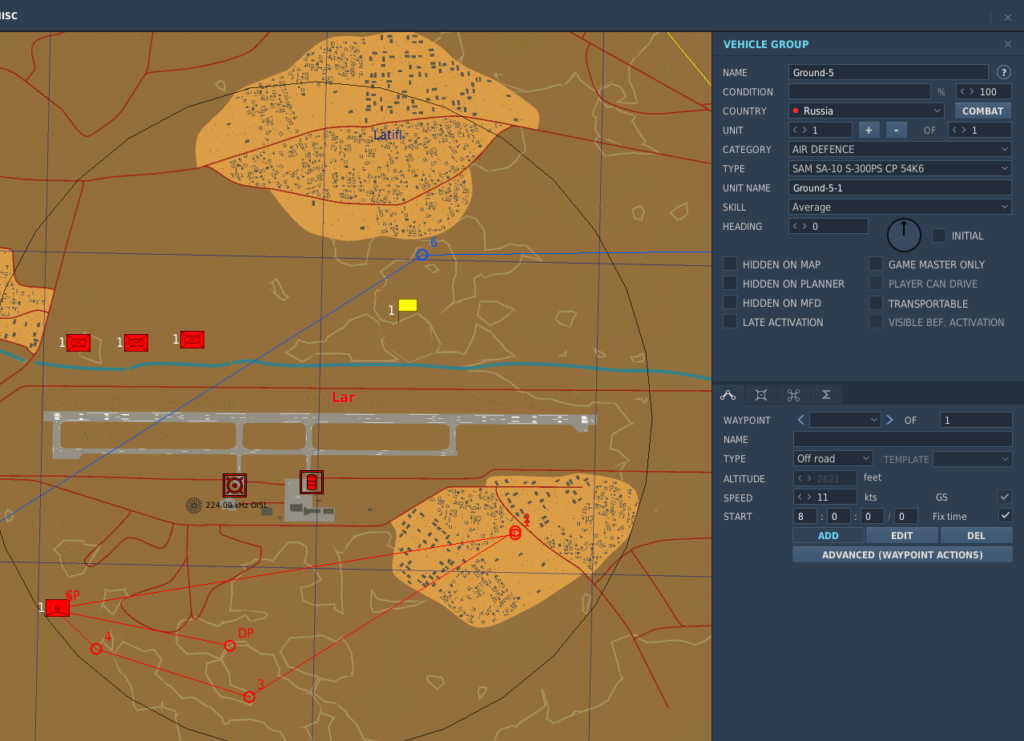
Conclusion.
I really hope the information in this post helps you understand both TACAN navigation and VORs. They have many similar features but some very useful options on TACAN that VOR does not utilize. Using these tools in DCS World will enable you more precise navigating as well as easier mission planning allowing many more successful flights. Your attack planning will be much simpler with the option of attacking targets from precise headings and distances when needed with TACAN so dive in and kill more targets.
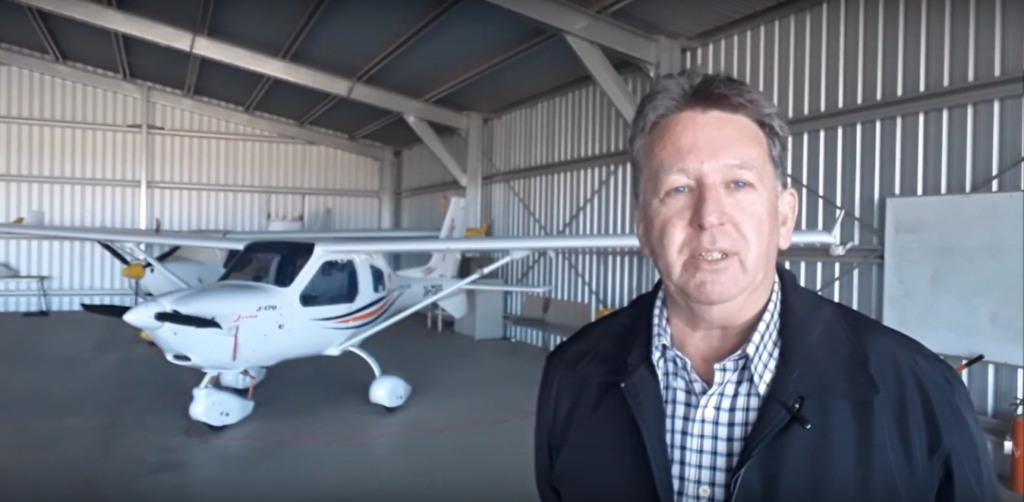
Author
Brendon McAliece (Aka Gunnie) is a a military veteran with 23 years working on Jet Fighters, their weapons systems and ejection seat/module systems as well as munitions and R&D. Involved with flight simulation since the 1980s, he has flown all the major flight simulators over the years.
He is an Australian expat who has lived in Malaysia, UK, Saudi Arabia and more recently Thailand. He is a multi-lingual blogger who loves to share his life experiences here on LetsFlyVFR.com and DreamingGuitar.com, with his lifestyle and Travel experiences Blog plus his Dreaming Coffee website.
Learn More @ DreamingGuitar.com – DreamingCoffee.com – LetsFlyVFR.com
( HOME – BLOG – SHOP – ABOUT )
As an Amazon affiliate I may earn on qualifying sales.
